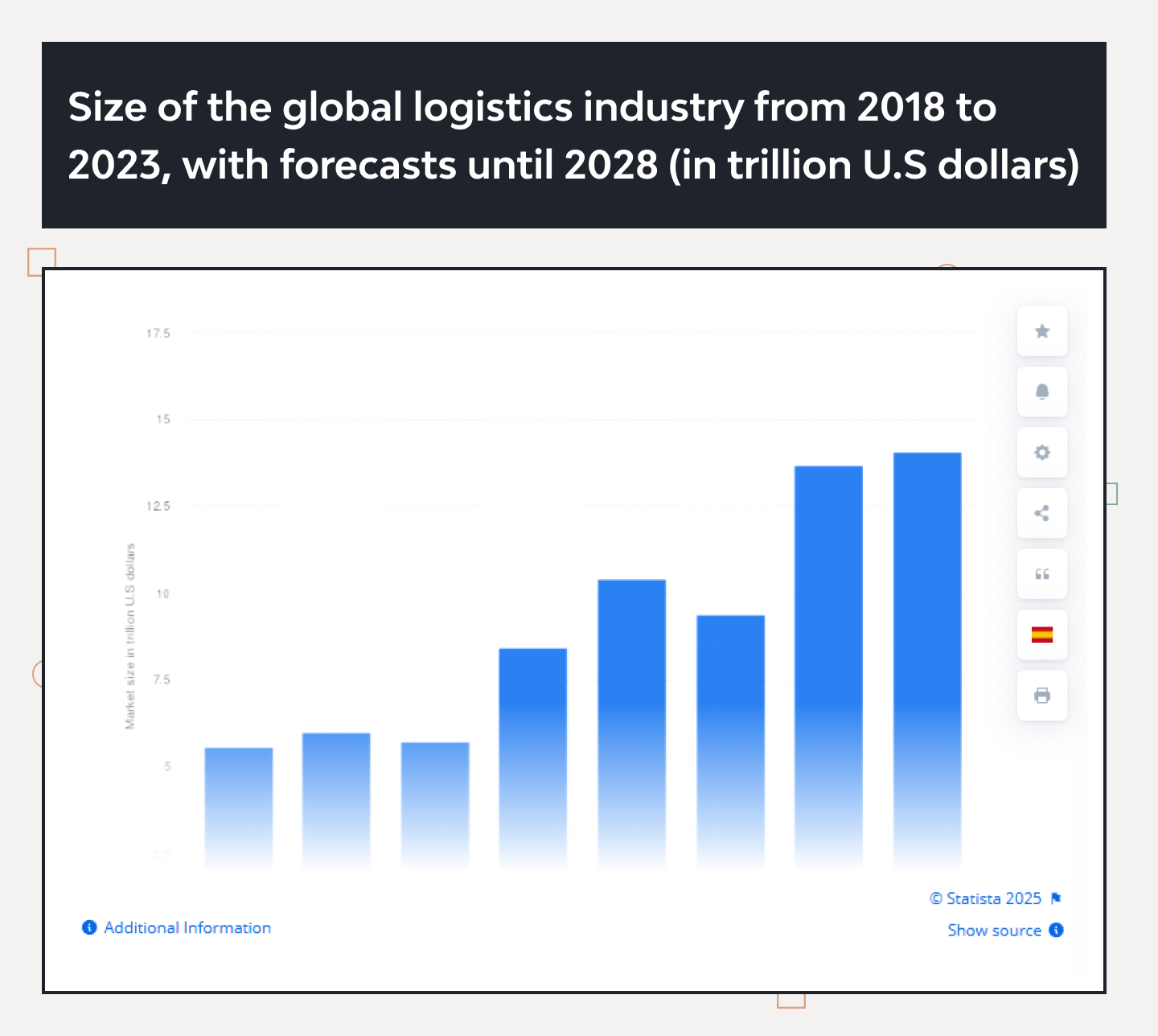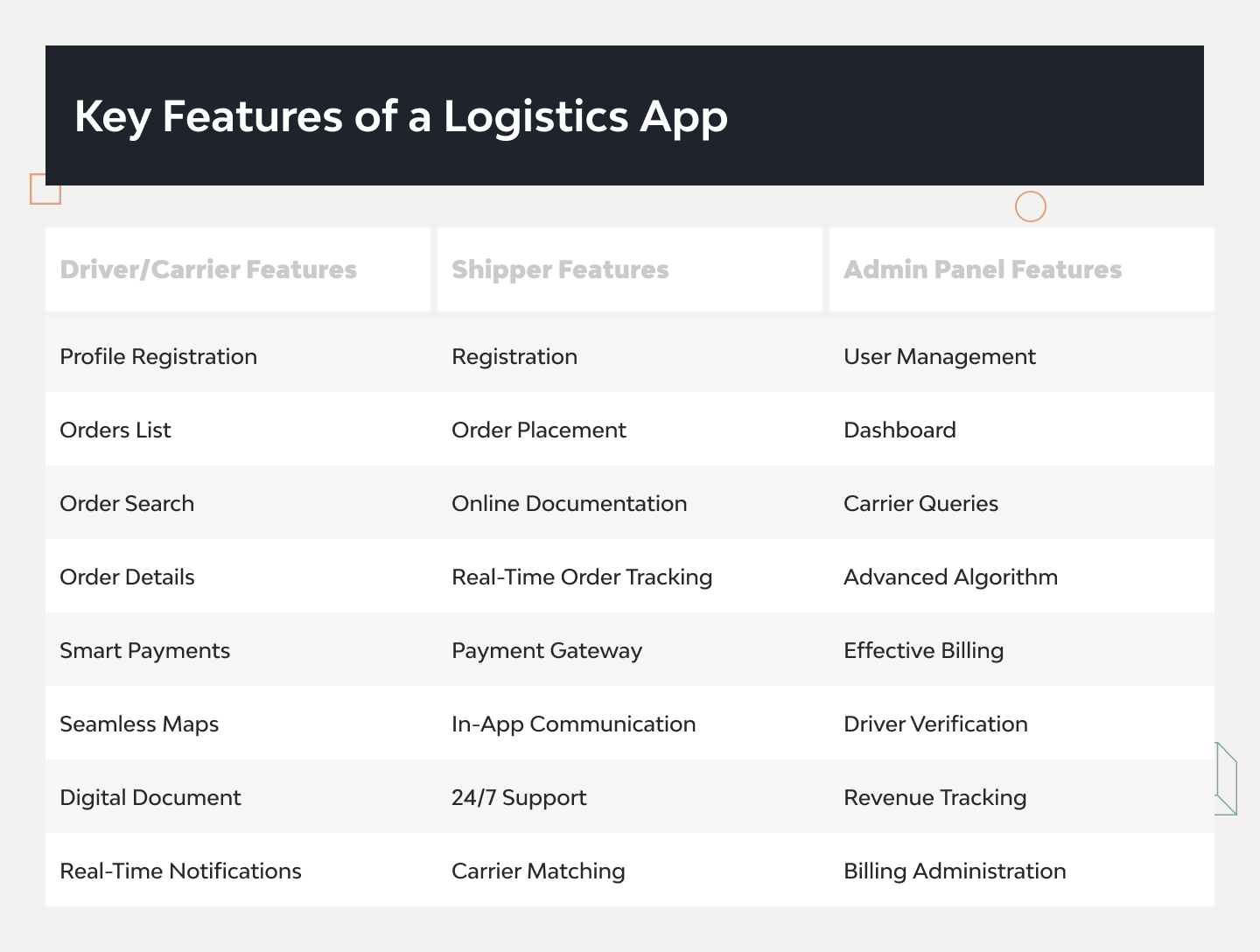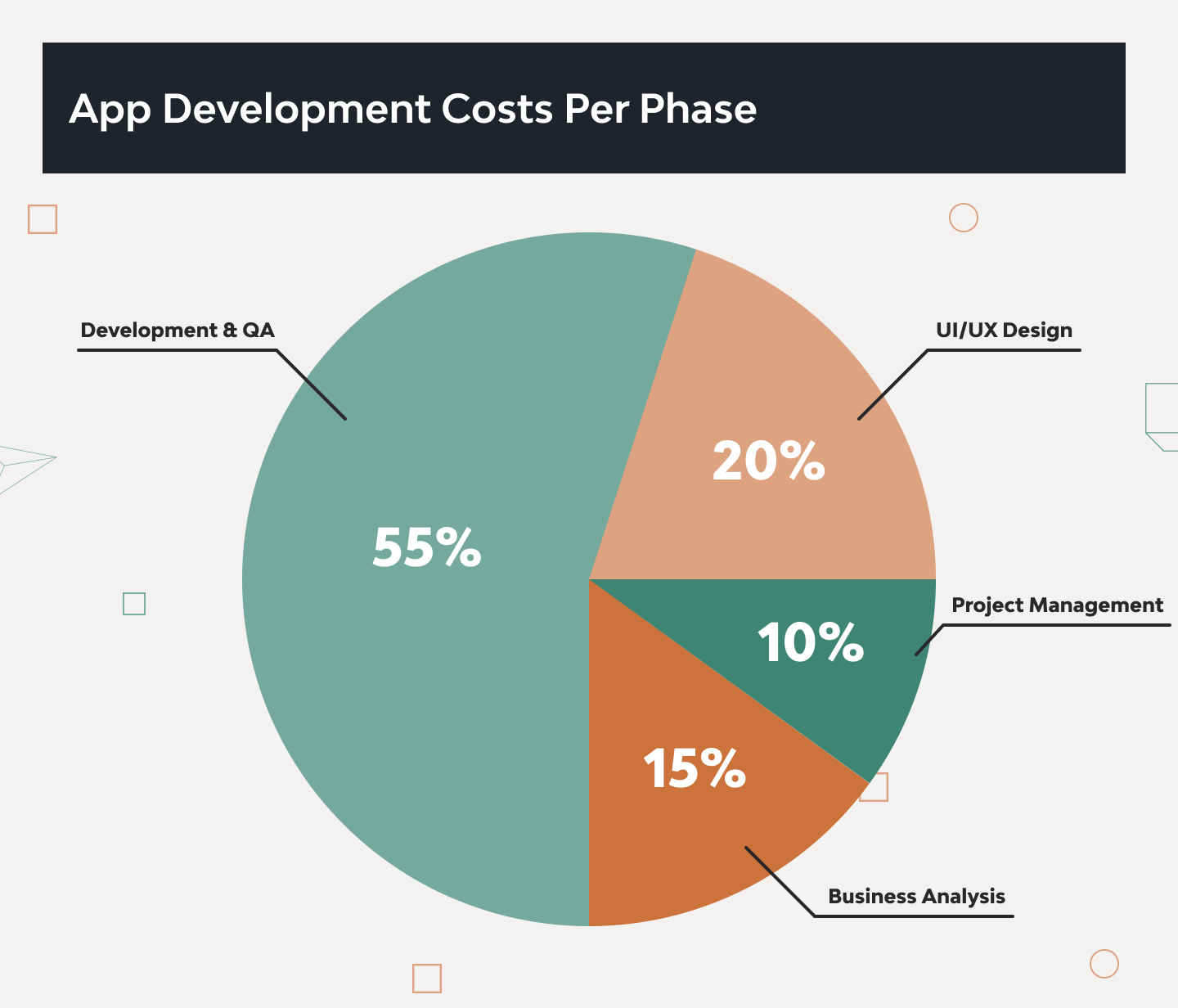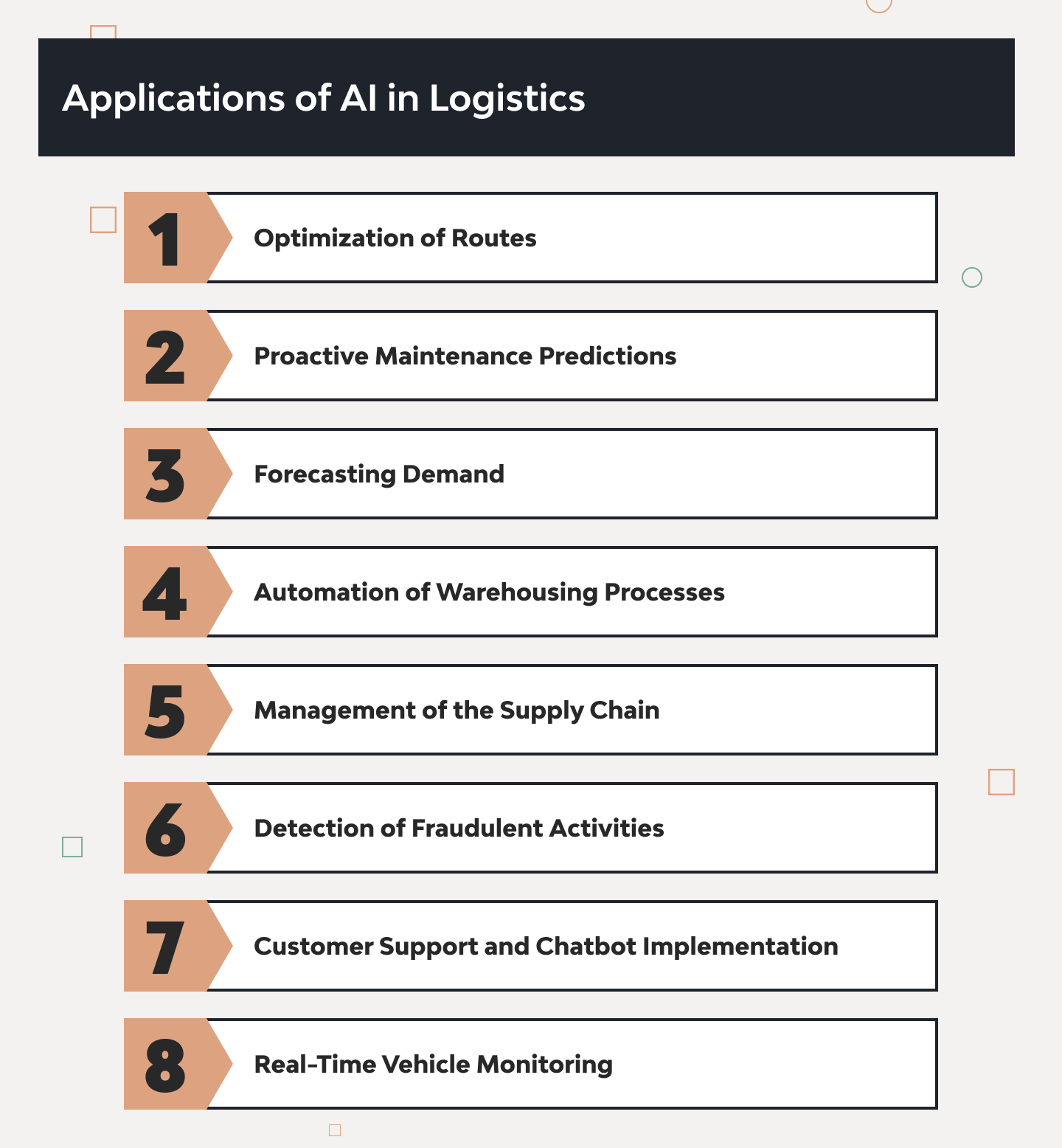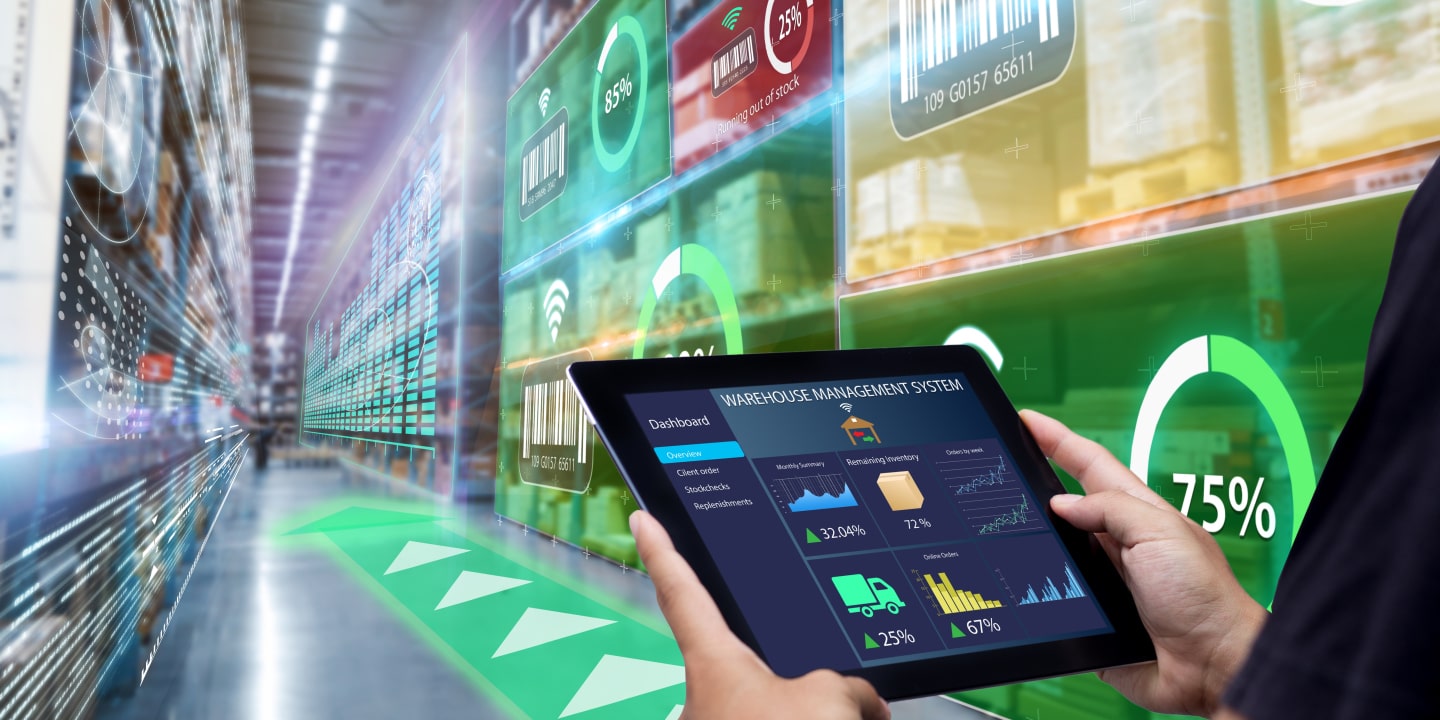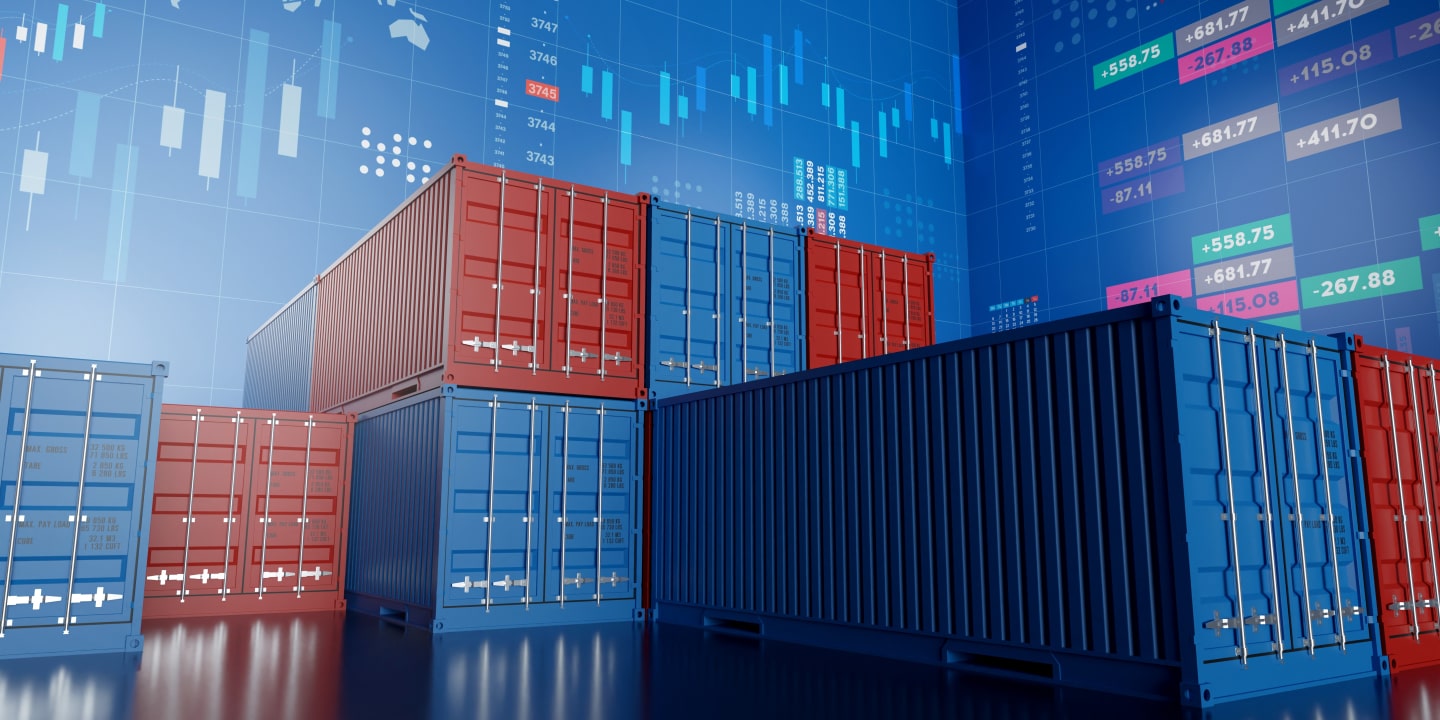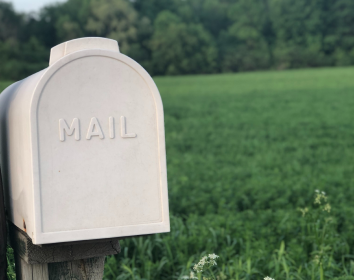Logistics App Development: A Big Practical Guide for Businesses

Logistics and supply chain operations can be extremely sensitive to manage and difficult to synchronize. Once you pick the best supply route, you also need to be able to navigate the situation on the road (in real-time, ideally) and switch directions at once. Once you connect with new suppliers and start expanding the moving goods inventory, you also need tools to centralize and automate the flow of products and assets supplied.
Tapping into logistics app development can be a perfect way to maintain high productivity and gain equally high profits while tying things up on all ends. Especially since the global logistics market is booming increasingly.
This article gives you a heads up on all the underlying processes. We’ll go through the most common types of logistics software, their features, and market examples. We’ll also uncover the process of creating a logistics app, highlight industry trends, and share more insights based on our own case study.
Types of Logistics Apps
First things first, what types of apps do we get for logistics in general? Here are the most relevant types with real-world examples.
Fleet management apps
Dedicated software solutions for fleet management can help gain a stable outlook on the state and performance of fleet vehicles as well as on the status and productivity of truck drivers. You can leverage such apps to keep connected with the fleet either via IoT sensors installed on trucks or simple mobile apps equipped with GPS.
Here’s a great real-world example of such an app:
- focus on IoT integrations
- real‑time vehicle tracking
- driver behavior monitoring
- fleet diagnostics
- route optimization
In the case of Samsara, a company with a large fleet may use it to pick better routes faster via a dashboard, balance out costs through all-around monitoring, and boost the safety of drivers by tracking their state and behavior.
Warehouse management apps
A dedicated warehouse app comes in irreplaceable when there is an active, supply-intensive warehouse or storage facility to manage. This calls for a separate range of features, mostly tuned for inventory centralization and management and accounting tasks, including the supply count and order fulfillment.
An example:
- focus on warehouse management
- accounting features
- integration with QuickBooks
- inventory control
- order fulfillment
- custom logistics automation
Fishbowl Inventory is good for small-to-medium businesses that need a cost-effective way to manage inventory and tie up warehouse operations by digitizing and automating things.
Delivery tracking apps
A dedicated app can also pack a set of logistics features for end-to-end delivery tracking and real-time management of the goods in transportation. Leveraging the mentioned IoT and GPS connection principles, such apps can help complete the shipment tracking cycle, highlighting its checkpoints, time in delivery, locations, etc.
An example:
- focus on delivery management
- real‑time delivery tracking
- time and fuel tracking
- dispatch software
- detailed delivery analytics
A last-mile delivery management platform is ideal for businesses that need to manage complex delivery routes and provide customers with up-to-the-minute tracking information.
On-demand logistics platforms
Freight logistics providers and supply chain companies commonly use all-in-one platforms for on-demand logistics. These mostly focus on highlighting available clients and shipment opportunities but may also feature extra tools for cargo tracking and synchronization of activities. All are available in one place, usually online, straight from a browser or a mobile app.
An example:
- focus on shipper-carrier interactions
- on‑demand freight orders
- freight management tools
- freight network
- tools for shippers and carriers
- empty mile solutions
Uber Freight is an on-demand freight marketplace that comes in useful for businesses looking to quickly match freight loads by specific criteria, like the available trucking capacity.
Supply chain management apps
A logistics or transportation app can also be dedicated specifically to planning out and tying up a chain of goods delivery with a range of supply chain tools. From procurement to delivery, a specialized supply chain app can help actually “chain up” the logistics process from supplies procurement to their transportation to delivery.
An example:
- focus on integrated supply chain management
- planning, execution, and monitoring tools
- supply chain segmentation
SAP’s supply chain platform is a more usual choice for large enterprises that look to manage complex, multinational supply chains with a reliable system.
Main Features of a Logistics App
As you can see from the above, all those apps pack a certain range of features, focusing on certain areas of supply chain and transportation, but it’s all very dispersed and situational. Below are the baseline functionalities that a good app should provide to some extent. Better yet, an ultimate custom app can pack all of these in one convenient place.
Real-time GPS tracking
A GPS tracking app or a platform with high-quality integration of GPS features allows for the main advantage of digital logistics solutions — real-time connection with the fleet, its vehicles, drivers, and even some smaller tech parts (like wearable truck parts, fuel tanks, etc.).
Features to look for:
- Live map or dashboard view
- Geofencing
- Speed monitoring
- Route history logs
- Deviation alerts
Fleet operators can use real-time tracking to boost the overall efficiency of deliveries, watch and consult driver performance, and even take safety precautions when seeing deviations from planned routes. For instance, if a vehicle strays from its assigned path due to unexpected traffic, dispatchers can immediately reroute the driver.
Automated route optimization
One of the top-priority cost-saving, business-boosting tasks of any logistics provider is sensitive route optimization that impacts carbon footprint logistics industry. For this, the most effective tool is often an interactive map or a ‘geo dashboard.
Features to look for:
- Live map view
- Real-time location updates
- Dynamic route planning
- Traffic analysis
- Rerouting tool
A logistics provider with a large fleet can drastically cut operational costs by automatically adjusting routes during peak traffic hours or poor weather, making sure that drivers always take the most time- and cost-effective path.
Inventory and warehouse management
A logistics app with a focus on storage digitization allows for hands-on inventory management. In particular, the end-to-end warehouse tracking enables storage managers to keep everything in sight, simplify maintenance, and cut corners where possible.
Features to look for:
- Product tracking
- Barcode and RFID scanning
- Stock level monitoring
- Replenishment alerts
- Order picking lists
- Batch/serial tracking
- Warehouse mapping
Retailers and eCommerce providers can indulge in real-time inventory updates and automated stock replenishment alerts. These features also help fulfill orders faster and optimize storage space more flexibly, saving a ton of costs in the long run.
Driver and fleet management
Apps dedicated to fleet overlook, like the ones mentioned above, are used for a deeper take on transport monitoring and courier management, where the whole park of vehicles is mapped out. Delivery dispatch managers can really use this when rerouting and tying up supply chains.
Features to look for:
- Driver scheduling
- Fleet tracking
- Vehicle diagnostics
- Maintenance alerts
- Fuel consumption tracking
- Performance metrics
- Dispatch management
By monitoring driver behavior and vehicle status, logistics admins can schedule preventive maintenance and (re-)optimize employee assignments. This is a great way to eliminate downtime while boosting the reliability of deliveries.
Customer notifications and order tracking
Apart from all the administration and management, customer or user-facing functionalities are also important. Thus, logistics apps can keep everyone involved in the delivery shipping on the same page, automatically notifying changing order status.
Features to look for:
- Order status updates
- Real-time tracking alerts
- SMS, email, and push notifications
- Delivery compilation report
- Order history view
For instance, customers tracking their online orders can get immediate notifications at every stage of shipping — from dispatch to final delivery.
Payment and invoicing integration
Last but certainly not least, a handy logistics app or platform can help manage financial aspects, including accounting, payments, and integrated invoices. All transactions taking place can (and should) be logged so that you have this valuable historical data.
Features to look for:
- Payment gateway
- Invoice generation
- Transaction logging
- Automated billing
- Multi-currency support
- Refund processing
Logistics companies can take their billing routines up a notch by automatically generating invoices once a delivery is completed. This helps minimize manual paperwork and cash flow management.
Logistics App Development Process
With a good sheet of references and a checklist of essential functionalities in hand, it’s time to implement a trucking app or a supply chain platform that collects all the best, most demanded features. If you are preparing for a new development project, here’s how it usually looks stage-by-stage.
Market research and planning
The best purpose-built app is a relevant app, i.e., the one created to fit the line of business, market focus, and end-users of the company or team. Thorough preliminary research and focused planning of development principles, milestones, and goals are also necessary to achieve a flexible, long-term, efficient application.
This phase is for:
- analyzing market demand and user needs
- going through trends and competitors
- working out scope and setting goals
- defining a future workflow with a strategy roadmap
Choosing the right tech stack
Picking the underlying tools, powers, and technologies for the logistics app creation is the essential task that drives an entire project workflow. This is also where you’ll need to consult with experienced developers who know which tech fits which purpose. The choice of technology is the pillar of a future app’s performance, security, accessibility, and scalability.
This phase is for:
- picking frameworks and programming languages
- aligning the choice of tools with the budget and team expertise
- selecting the best-fitting platforms, tools, and integrations
UI/UX design principles
It is important to achieve a truly intuitive, simple-to-grasp UI/UX for the app, whether it is to be used by an external audience of users or in-house staff. In particular, designers map out the flow of user actions and plan out a sequence of available UI elements accordingly.
This phase is for:
- wiring out an app’s carcass
- building early prototypes
- mapping out user flows
- creating brand-consistent designs
Backend and API development
With a reliable, clear app architecture wireframe, it’s time to grow some meat on it, adding responsive features and taking care of integrations. The latter may require the creation or custom connection of APIs — the special “in-betweens” for custom third-party integrations.
This phase is for:
- working on a system architecture
- implementing core business logic
- integrating databases
- developing or using readymade APIs
- optimizing data security and performance
Testing and deployment
All the implemented wireframing and functionality must be thoroughly tested, of course, and iterated until the best functional results are achieved. For this, testers and software engineers may want to combine functional, unit, stress-load, and other methods of software testing. This phase concludes with the completion of testing and the deployment of the refined product into production.
This phase is for:
- doing a range of specialized tests
- iterating app versions until polished
- conducting user acceptance testing and QA
- deploying an app to production
Support and maintenance
After the app’s launch, its creators must ensure its stable work in the field, where the practical use of the app reveals the main points to fix or improve upon. Of course, the software, especially if it’s cloud-based, requires regular security checks and bug-fixing, too.
This phase is for:
- tracking the uptime and performance
- gathering and analyzing feedback
- fixing bugs, patching, and upgrading the app
- maintaining support
- providing documentation and reports
Challenges in Logistics App Development
Having your basics straight, as well as some essential overhead knowledge of today’s logistics solutions, is already a competitive edge in itself. However, if you know your potential bumps, risks, and common pitfalls, you get to hone it further even before you decide to develop an app. What can stand in the way of your new app project? Let’s take a look.
Scalability and security concerns
The first common concern most companies have when investing in new app or platform development is whether it will be viable long-term. Along with that comes the question of data or user info protection. Getting guarantees can be difficult, but both of these potential issues are made non-existent if you go for a custom-tailored app creation approach.
Integration with existing systems
If a company runs on legacy software or very individually customized platforms, it can be challenging to integrate a new app for a holistic digital workflow. This is where, again, custom APIs may be required, or some expensive hardcoding that can be avoided altogether with a good custom app.
Regulatory and compliance challenges
Probably the most persistent challenge of any logistics provider, especially a multi-national one, is ongoing compliance with local and international work regulations. Here’s a checklist of the most relevant regulations that you may need to handle:
- ICC’s International Commercial Terms
- IATA’s air transport regulations
- export control laws (U.S. ITAR, EAR)
- individual customs regulations
- trade agreements (USMCA)
- data privacy regulations (GDPR)
Cost of Logistics App Development
Coming up with the final cost of a logistics app development project is yet another challenge because every project is unique. But we’ll try to give you the most detailed breakdown. The overall expense is shaped by the following essentials:
- Complexity of features: The number and sophistication of functionalities significantly drive up costs. More complex features require more development time and complicated expertise.
- Design and user experience: Custom UI/UX design may call for some extra investment compared to using standard templates. But the eventual ROI pays off.
- Technology stack and integrations: The choice of backend infrastructure, programming languages, databases, and the need to integrate with third-party APIs (e.g., payment gateways, mapping services) have a felt effect on the cost.
- Development team location: Teams in North America or Western Europe tend to charge higher rates than those in Eastern Europe or Asia.
- Security and compliance requirements: Logistics apps often handle sensitive data (such as shipment details and customer information), and just handling all the compliance details may require a certain investment.
- Maintenance and future scalability: Beyond the initial build, ongoing support, regular updates, and scaling the infrastructure as your business grows are important cost considerations.
Cost breakdown by complexity and features
Basic solutions
On the lower end of the cost spectrum are simple logistics apps. These are usually dedicated to one or a bunch of business areas, e.g., an app for order tracking with a basic user interface that provides standardized reports. Such projects typically require less time and fewer resources but also have the widest price range spread.
- Cost range: Approximately $2,000 – $20,000+
- Scope: Focused on one or a limited number of business areas
- Key features: Basic UI, standardized reporting, limited integrations
- Development time: 2–3 months
- Resources: Fewer developer hours and a simpler tech stack
Intermediate solutions
Slightly more complex apps that boast more intricate functionalities, such as real-time tracking, support of a bigger user-base, proactive security, and ranged third-party integrations. These will naturally fall into a higher price range.
- Cost range: Approximately $20,000 – $50,000+
- Scope: More intricate functionalities and broader user support
- Key features: Real-time tracking, multi-user support, in-depth security, APIs
- Development time: 3–6 months
- Resources: Moderately complex tech stack, additional integrations
Enterprise-level solutions
Full-on logistics platforms help companies digitize a larger scale of tasks and speed up processes all around. The capabilities featured by such platforms usually include in-depth analytics of BI and other data assets, smart systems for route optimization, and full integration with existing enterprise systems (if available).
- Cost range: $50,000 – $120,000+
- Scope: Full-scale logistics platforms designed for large organizations
- Key features: In-depth business intelligence and logistics analytics, smart route optimization systems, full integration with existing ERP/CRM systems, advanced security and compliance measures
- Development time: 6–12 months (or more, depending on scope)
- Resources: Extensive development team, complex tech stack
Custom vs. off-the-shelf solutions
Yes, it all comes down to this choice — a company can go for a readymade product or initiate custom development, each approach with its own prerequisites and outcomes.
Off-the-shelf solutions
These can be less expensive upfront and quicker to launch. However, an existing solution that you simply integrate for your own purposes will not fully address your unique business requirements. On top of that, off-the-shelf apps don’t give you as much control over the logistics processes, providing more of a third-party logistics solution.
Custom solutions
A custom approach is generally more costly at the outset, but this is a worthy effort, as you invest in lots of in-depth work on matching the app with your particular company. The tailored approach stands out in that it easily translates into long-term savings and a freedom to scale and rework the app when needed.
Trends in Logistics App Development
The logistics apps built today can vary a lot in their purpose, shape, and size, but most solutions are driven by these major trends.
AI-powered logistics solutions
Solutions featuring automated rerouting based on road situation analysis, smart order fulfillment apps, and end-to-end AI-powered systems are all the rage, and for a reason. Smart automation has become a proven tool to eliminate senseless routines, save time for employees, and boost operations throughout.
Blockchain for supply chain transparency
The immutable ledger functionality helps reinforce data protection while smart contracts synchronize and enable much more transparent supply chain operations. On top of that, the blockchain technology has matured enough to bring reliable results to the table.
5G and IoT applications in logistics
With GPS and mobile Internet connection being the most widely used, crucial technologies for connection with fleets and drivers, new apps are gradually advancing the standards. Namely, by adopting IoT devices and networks that allow tracking characteristics of vehicle parts; and by transitioning to the 5G standard for faster, more stable mobile connection.
Django Stars Experience in Logistics App Development
The software development team at Django Stars had the particular pleasure of contributing our own software expertise to iCANS — a platform for an SaaS logistics company looking to reinvent garbage disposal in the US through dumpster rentals.
iCANS is a smart supply chain platform that optimizes dumpster rentals with a range of automated features and dedicated tools for driver-operator interactions. But in order to make it a reality, we needed to build a new custom AI engine, a web app, and a mobile app.
Each app was meant to provide handy interfaces for three types of users — admins, managers, and drivers. Yet another task was to cover the entire logistics funnel of the garbage disposal process, which included:
- planning
- optimization
- completion
This took a lot of segmented feature implementations. To help plan out logistics, we’ve implemented personal profiles and user cabinets equipped with calendars, routing maps, and scheduling features. For the optimization part, a good share of automation was thrown in, mostly into routing and path/price calculations, as well as collaborative features.
There are also automated reports and convenient tasking portals for tracking and managing administrative part of the logistics workflow. We’ve done more than that, however. Take a look at the iCANS case for more details.
Conclusion
With the global logistics market booming, valued at more than $18 billion in 2025, these insights will help you take on it and get your fair share of profits no matter the scale of operations. To make sure you build something truly useful and business-boosting, all you need is a logistics software development company to guide your way.
Django Stars is a full-range provider of custom software development and consultancy services where seasoned specialists leverage years of high-end expertise into your business needs. Contact us to discuss a logistics project you have in mind. Better yet, let’s consult your next steps, even if all you have right now is a concept and a goal.
